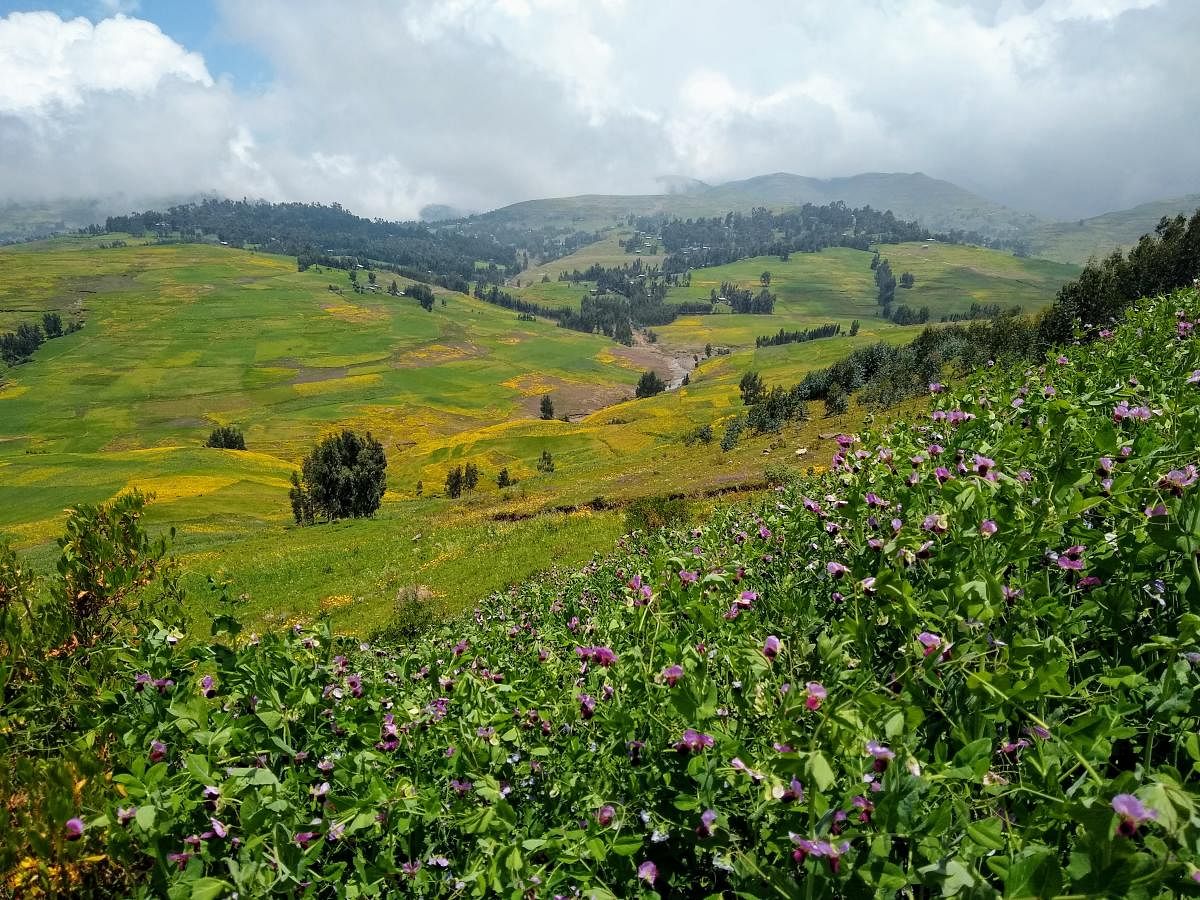
With its 43-year-old Prime Minister, Abiy Ahmed bagging the Nobel Peace Prize 2019 last month, Ethiopia has suddenly been catapulted into global consciousness once again.
For many who last heard about the East African nation when Bob Geldof’s Band Aid record and Live Aid concerts highlighted the terrible famine that gripped parts of the country in the mid-1980s, the positive news emerging from Ethiopia these days is astounding. Although it is still a low income country, it is currently the fastest growing economy in Sub-Saharan Africa. And few other countries anywhere can claim the distinction of simultaneously having a female President, a female Chief Justice of the Supreme Court, and a gender-balanced Cabinet.
Interactions between Ethiopia (earlier known as Abyssinia) and India span nearly 2,000 years of recorded history, with trade between the two flourishing from the first century onwards, both Indians and Ethiopians crossing the seas to each other’s shores as workers, merchants, professionals, soldiers and teachers, a few Ethiopians even rising to become rulers who established dynasties in parts of India, and so on.
Natural beauty
Yet Ethiopia has so much to offer the discerning visitor, from extraordinary, diverse natural beauty to history, culture and tradition dating back to the early years of Anno Domini (AD), if not earlier. Some legendary figures associated with Ethiopian history, such as the Queen of Sheba, are believed to have lived in the 10th-11th century BC and onwards. In addition, the land, now known as Ethiopia, was evidently home to the earliest known ancestors of homo sapiens: Lucy (or Dinkinesh), a female hominid who is supposed to have walked the earth nearly 3.2 million years ago and whose skeletal remains were discovered in 1974; and Lucy’s oldest known relative, whose skull, dating back 3.8 million years, was discovered in 2016 and made public in August 2019.
I have only good memories of the seven formative years of my childhood spent in Addis Ababa in the 1960s and am happy to say that my recent visit (after a gap of over five decades) has revived and reinforced those early, positive impressions. Addis — Africa’s fourth-largest city and its diplomatic capital — has of course grown into a sprawling metropolis prone to traffic congestion, like most cities in India, but the traffic seemed relatively less chaotic and drivers less aggressive, with hardly any honking to be heard. It also appeared much cleaner than most Indian cities today, even in the poorer localities. I was also gratified to find that some of the older areas, landmarks and institutions I was familiar with have remained relatively unchanged and surprisingly recognisable, which is
more than I can say about many of our cities.
Flavourful
I have been a long-time, loyal fan of Ethiopian food, which I am convinced will suit the palates of most Indians, including vegetarians (few other non-Indian cuisines offer such a variety of lentil dishes, for instance). However, even back in the 1960s, Addis had restaurants offering excellent Italian food (thanks to the brief Italian occupation in the 1930s) as well as Chinese cuisine. Now, of course, the city boasts of numerous hotels and restaurants, including some cute, chic cafes and bistros. Some restaurants and bars also have live performances — both traditional and contemporary, including Ethio-Jazz.
Ethiopian coffee has become world-famous of late but the fact that the country is believed to be the birthplace of the popular beverage is not as widely known.
The elaborate traditional coffee ceremony is an integral part of Ethiopian social and cultural life. Other customary intoxicants are home-made drinks like Tej (honey wine) and Tella (the equivalent of beer). But for the less adventurous, there are now several brands of Ethiopian beer as well as some quality wines from newly established vineyards. And most bars, even in small towns, offer a range of hard liquor.
Of the country’s present tally of nine UNESCO World Heritage sites (eight cultural and one natural, besides three intangible heritage listings), we managed to visit four during our week-long tour of northern Ethiopia, which is its historic heartland.
Iconic
Bahir Dar, the charming city on the banks of the enormous Lake Tana, was our gateway to the north. Of the 37 islands scattered around the 3,000 square kilometre water body, the source of the Blue Nile, at least 20 shelter ancient churches and monasteries, some featuring striking paintings and murals on their walls.
Our next stop was Gondar, home to several heritage sites dating back to the 17th century. During our weekend in the Simien Mountains National Park, we had a lucky close encounter with the Gelada baboons endemic to the highlands of Ethiopia. Aksum — where Christianity first took root in Ethiopia, in the fourth century AD — transported us back to the earliest legends, traditions and monuments associated with the country’s history. And Lalibela, with its eleven
iconic, monolithic churches hewn out of rock in the 12th or 13th centuries, was awe-inspiring.
With Ethiopia’s peak tourist season (October-February) having begun, this may be just the time to plan a trip to this relatively untouched destination before more tourists begin to flock there.